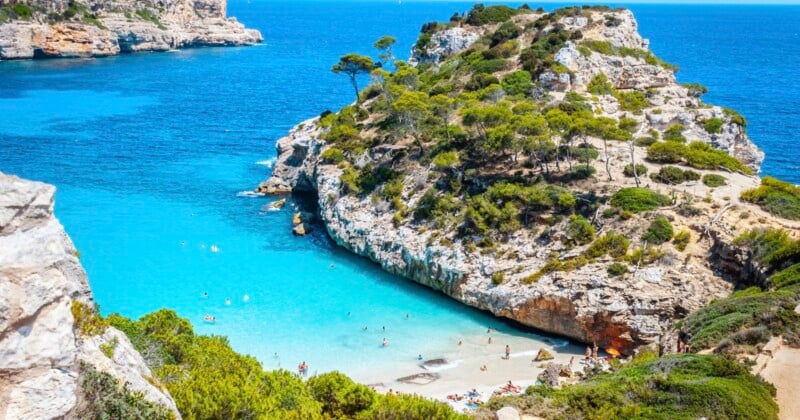Spanish Islands ‘Ban’ Influencers After 4,000 Tourists Flock to Tiny Beach for Selfies

Spain’s Balearic Islands have had to crack down on using social media influencers to promote its locations after a tiny beach became overrun by thousands of tourists wanting to take selfies there every day.
The tourist authority in Spain’s Balearic Islands says that “selfie tourism” is destroying some of its most beautiful locations. It has had to remove all photographs of certain small beaches from its website to stop tourists and influencers from going there.
According to a report by The Guardian, the Balearic government initially enlisted influencers, with hundreds of thousands of followers, to help ease pressure on overcrowded hotspots by promoting less-visited areas. However, this strategy backfired. Instead of spreading out visitor numbers across Spain’s Balearic Islands, influencers have unintentionally drawn large crowds of tourists to remote, ecologically sensitive locations. These tourists reportedly take selfies of these destinations, post them on social media, and then leave.
One stark example is Caló des Moro, a tiny cove in Mallorca with a capacity of around 100 people. After Caló des Moro was featured in photos posted by a popular influencer, it began attracting more than 4,000 visitors and over 1,200 vehicles daily — far beyond its capacity.
“It’s had the completely opposite effect to what was intended and runs contrary to government policy on containing tourism,” a spokesman for the Balearic tourism department tells The Guardian.
As a result of these issues, the local authorities say it has been forced to remove all images of Caló des Moro from its official website. Meanwhile, María Pons, the local mayor, has also pleaded with journalists and tour operators never to mention the beach again.
In recent months, Spanish authorities have taken several measures to alleviate the negative impact that selfie tourism is having on the country.
Last month, Barcelona announced that it is creating a large public square dedicated for tourists to take selfies near Sagrada Familia. The city says it is taking action to ease the congestion caused by millions of people taking selfies around the Sagrada Familia, the unfinished church which has become one of the world’s most popular tourist landmarks.
In March, tourists were blocked from a popular clifftop in Spain, that has become a famed selfie spot, by local protesters. Thousands of angry residents have barricaded Es Vedrà viewpoint on the island of Ibiza, Spain, with boulders and “no entry” warnings — after becoming fed up with the influx of tourists taking selfies there.
Image credits: Header photo licensed via Depositphotos.